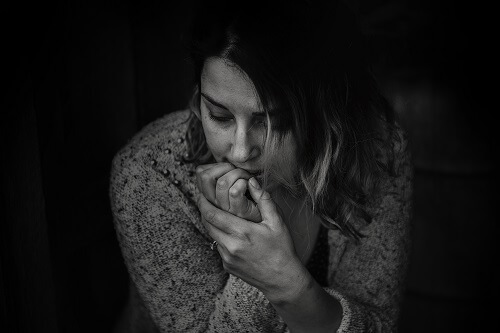*The author generated this text in part with ChatGPT, OpenAI’s GPT-3 large language model. The content was reviewed, edited, fact-checked, and revised by our editorial team.
Attachment theory suggests that childhood experiences and early relationships with caregivers influence our ability to form and maintain healthy relationships as adults. You might be wondering why you tend to select similar romantic partners, or you might be curious to learn the deeper meaning behind why your past relationships haven’t lasted.
We’ll dissect the four attachment styles to help you understand why you might act or react in certain ways when in a romantic relationship.
What are the 4 attachment styles?
The different attachment styles can be broken down into four types:
- Secure attachment
- Anxious/preoccupied attachment
- Avoidant/dismissive attachment
- Fearful/disorganized attachment
Secure attachment

Individuals with a secure attachment style likely grew up with consistent and responsive caregivers they could rely on in times of uncertainty. This helped them learn to trust others, establish self-confidence, and develop healthy coping mechanisms to deal with anxiety and stress.
A secure attachment style coincides with feeling comfortable with intimacy and forming close relationships with partners. These people are trusting of others and can openly communicate their needs and emotions. They also know how to find a healthy balance between independence and emotional availability with their partner.
Securely attached individuals tend to have more fulfilling relationships and experience less anxiety and depression. They’re also more likely to have children who develop secure attachment styles themselves. However, even people who feel secure may experience challenges in their relationships.
So, how do you know if you’re someone with a secure attachment style? You’ll likely possess the following traits:
- Communicative
- Self-confidence
- Independence
- Emotional availability
- Forgiveness
- Ability to set healthy boundaries and respect partner’s boundaries
Anxious/preoccupied attachment

People with an anxious attachment style may have experienced inconsistent or unpredictable caregiving during childhood, leading to a sense of anxiety and mistrust in relationships. They may have experience neglect or learned to cope with distress by seeking attention and affection from their caregivers.
Individuals with an anxious/preoccupied attachment style crave intimacy and fear rejection. They often feel insecure and uncertain in relationships and may be overly clingy or jealous. They may have a tendency to ruminate on negative thoughts, worry excessively about their relationship, and rely heavily on their partner to validate their self-worth. Those with an anxious/preoccupied attachment style may also struggle to communicate their needs effectively, constantly seeking reassurance and validation from their partner.
This attachment style may benefit from therapy or counseling to develop healthier coping mechanisms. For example, they might learn to identify and challenge negative thought patterns, regulate their emotions, build trust in relationships, and communicate their needs more effectively.
If you’re in a relationship and lean toward an anxious/preoccupied attachment style, you may notice that you:
- Worry excessively
- Fear rejection or neglection
- Struggle to regulate your emotions
- Cling to your partner
- Regularly notice a sense of jealousy
- Feel uncertain or anxious about your relationship
- Feel uncomfortable communicating your feelings
Avoidant/dismissive attachment

People with an avoidant/dismissive attachment style may have experienced neglect or rejection during childhood, leading them to believe they can’t rely on others for emotional comfort. They may have learned to suppress their emotions and prioritize self-reliance as a way to cope with their experiences.
Individuals who are avoidant/dismissive value independence and autonomy, thus viewing intimacy as a potential threat to their freedom. They may avoid emotional connection, struggle to express their feelings to their partner, or shut down or withdraw in response to conflict or emotional vulnerability.
Those with avoidant/dismissive attachment styles may be emotionally aloof or uncomfortable with physical touch or affection as adults. They may also prioritize other aspects of their life over their relationship, which could be detrimental to their partner.
In therapy, these individuals can learn to identify and express their emotions, develop strategies for managing anxiety and fear of intimacy, and build trust and emotional connection to experience healthier connections with their partners.
Those with an avoidant/dismissive attachment style tend to hold the following traits:
- Independence
- Self-sufficiency
- Emotional unavailability
- Fear of intimacy
Fearful/disorganized attachment

Someone with a fearful/avoidant attachment style may have experienced inconsistent or abusive caregiving during childhood, leading to feelings of confusion, anxiety, and distrust in relationships. They may have resorted to coping with distress by dissociating or shutting down emotionally, which likely translates to intimacy issues in adulthood.
Individuals with a fearful/avoidant attachment style tend to have conflicting feelings about intimacy. On the one hand, they crave emotional connection, but on the other, they fear rejection and abandonment. This results in potentially mistrusting their partners or engaging in self-sabotaging behaviors undermining the relationship.
The individual may be insecure or view themselves as unworthy, constantly fearing that their partner will leave them. But at the same time, they may participate in self-destructive behaviors or push away their partner.
As with any attachment style, those who are fearful/avoidant can benefit from therapy or counseling to work through past experiences. They might work on combatting negative thoughts and self-talk and developing strategies to build trust in relationships. They can learn to form more secure attachments and enjoy healthier relationships with external support.
If you have a fearful/disorganized attachment style, you may:
- Crave emotional intimacy
- Fear rejection and abandonment
- Have trust issues
- Engage in self-sabotaging behaviors
- Push your partner away
- Struggle with forming close relationships
Awareness is the first step
Learning your attachment style can help you better understand yourself and your romantic relationships. Note, however, that attachment styles can vary in intensity and may shift over time based on new experiences. It’s also possible to have a combination of attachment styles or exhibit different attachment styles depending on the relationship you’re in. No matter which patterns you exhibit, therapy is a great way to work through any fears and uncertainties and ultimately achieve more security in your relationships.





